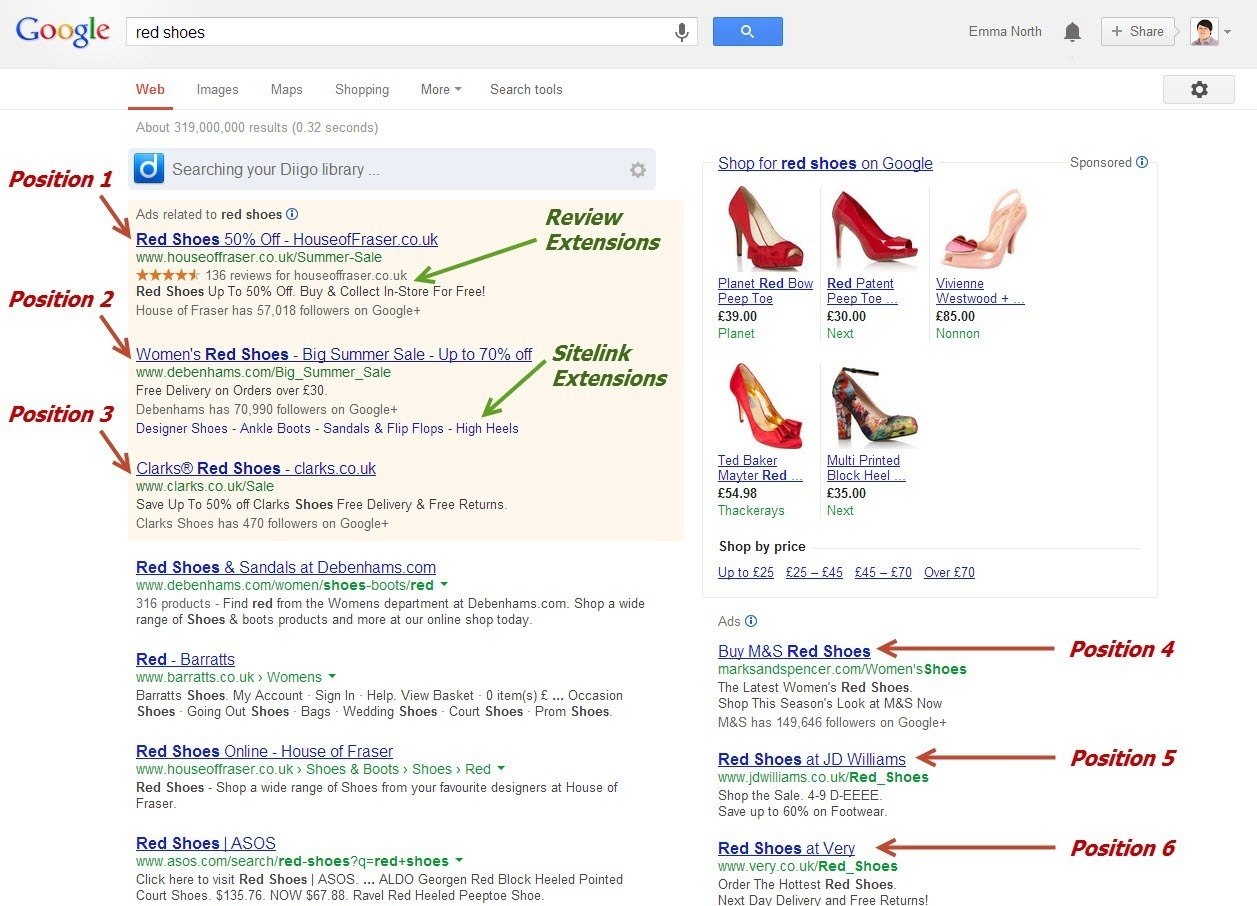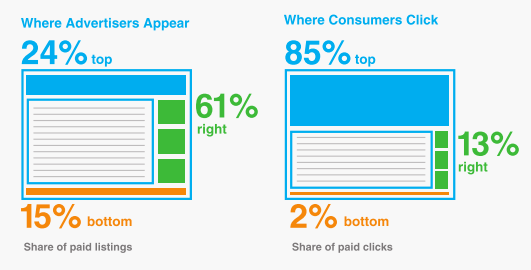 Google AdWords is a great way to get traffic into your website quickly without the longer process of search engine optimisation. By using a strong, targeted AdWords PPC campaign, you can have qualified leads visiting your site in a matter of hours.
Google AdWords is a great way to get traffic into your website quickly without the longer process of search engine optimisation. By using a strong, targeted AdWords PPC campaign, you can have qualified leads visiting your site in a matter of hours.
However, the success of a PPC campaign hinges largely on one key metric; Click Through Rate (CTR). A high CTR means more visitors and better account performance. However a low CTR reduces the effectiveness and quality of the campaign and means you are likely to pay a higher Cost-per-Click.
The Effects of a Low Click Through Rate
On the surface, having a low Click Through Rate might not seem like too big a deal as you’re only paying for actual clicks, not impressions that aren’t clicked. However, a low CTR can also result in low Quality Scores which in turn means you have to pay more per click to reach the top of the page.
Cost-per-Click is calculated by AdWords using your maximum Cost-per-Click bid and your Quality Score. For example, a keyword with a Quality Score of 3 might need to pay £2 per click for the top ad position whereas a competing keyword with a Quality Score of 10 may pay just 50p for the same position. This is because Google deems keywords with higher quality scores to be more relevant and useful to the user so wants to prioritise these adverts in search. A low CTR brings your Quality Score down because if few people are actually clicking you ad, Google determines that it is not as relevant as the others on the page.
What Is A Good CTR?
The CTR you can expect depends on how generic or targeted your keyword is. For example, the keyword “shoes” on broad match (aside from being far too broad to be a good target keyword) would likely have a much lower CTR than “red ladies shoes” on exact match.
That said, it’s often accepted that a well refined and targeted campaign on the search network should achieve 2-3% CTR or above and anything below 1% can be considered low.
Causes of a Low CTR & Ways To Improve It
There are a number of reasons why CTR could be low and many ways in which you can improve it.
Poor Average Position
The most important factor affecting CTR is undoubtedly your ad position.

If your ads are not spending the large majority of their time in the top ad positions, the CTR will be massively affected. The vast majority of searchers who click paid adverts click ads from the top of the page, as represented in this image from Nick Andrews’ post on Receptional:

For more information on ad position and Ad Rank, check out Google’s AdWords Help page here.
To improve your ad position you must do at least one of two things:
- Increase your maximum Cost-per-Click
- Increase your keyword Quality Score
It’s easy to increase your keyword bid but you might not be prepared to pay any more for a single click, which means you need to try and increase you Quality Score.
If you’re unable to increase your Quality Score for a keyword, or already have a very high Quality Score but are still achieving a low ad position, you should consider pausing the keyword altogether. If you are in position 3 or below your ad will not appear at the top of the page and ads displayed on the right or at the bottom of the search engine results pages are far less likely to get clicked. This means the keyword is not adding any value to your campaign and the low Click Through Rate will be having a negative effect on the rest of your campaign, bringing your average CTR down.
Irrelevant Ads
When a user searches for a keyword, they are most likely to click on an ad if it exactly matches what they’re looking for.
This is why an ad group should ideally contain only one target keyword or very slight variations. For example, if your ad is all about red shoes, you would only want “red shoes” in your ad group, not “ladies shoes” or “blue shoes”.
In doing this, you can serve different ads to different keyword searches and ensure the ads are as relevant as possible. From there it is a case of split testing multiple ads to continually refine and improve your campaign.
To improve your ad relevance, consider the following:
- Include the target keyword in the title, description and display URL for all your ads. The keyword will be bolded in the search results, adding extra emphasis to your ad.
- Always have two ads running in each ad group and continually split test. Let both ads run to collect enough data to make an informed decision on which is working better. Pause the other, copy the successful one and tweak it to try and make it more effective.
- Use a strong call to action
- Use the Google Ad Preview Tool to see what sort of ad text your competitors are using for ads targeting your keywords for some inspiration and see what stands out best.
Poor Landing Pages
Another factor to consider when puzzling over your low Click Through Rate is your landing page and indeed other on-site factors that could be holding back your Quality Score.
When you set a landing page for your ads and the ad becomes eligible to show, Google will crawl the landing page and evaluate its relevancy. This evaluation forms part of your Quality Score and if Google deems your landing page irrelevant to the target keyword then your Quality Score will be lower. This can lead to higher a CPC, lower ad position and therefore a lower CTR.
When setting the destination page or designing landing pages, consider the following:
- Ensure the landing page loads properly and quickly; slow page speeds can affect your Quality Score
- Make sure the landing page you use as the destination is as closely relevant to your keyword and ad as possible. Send visitors to the most relevant page
- Avoid using your site homepage as a landing page wherever possible. There will nearly always be a more relevant page to send visitors to, except perhaps with branded keywords
- Make sure your landing page includes your keywords. Failing to do so can result in a low Quality Score if Google deems the page not highly relevant
- Make sure you have a comprehensive Privacy Policy on your site and include details on the cookies your site uses. Not having one can cause legal issues and breach Google guidelines
Ad Extensions Not Used Or Not Showing
Ad Extensions are a fantastic way to increase your ad performance and CTR. There are a wide variety of different extensions available.
Another of my colleagues, Tara West, recently discussed Enhanced Campaigns at On The Edge in Manchester, where she shared some fantastic stats on ad extensions:
- Call extensions increase CTR by 6% on average
- Sitelinks increase CTR by 20% on average
Source: trada.com
It’s worth remembering the ad extensions will only show if your ads rank in the top two positions, so it’s even more important that you monitor your average position and deal with any under performing ads and keywords.
Other Ideas?
 These are probably the most common causes of and solutions to low Click Through Rate and you may find that there are many reasons contributing to poor performance in AdWords.
These are probably the most common causes of and solutions to low Click Through Rate and you may find that there are many reasons contributing to poor performance in AdWords.
If you have any questions or feedback please feel free to share them in the comments section below.
Pointing cusor hands from Bigstock
Feedback Box Image from Bigstock






Leave a Reply